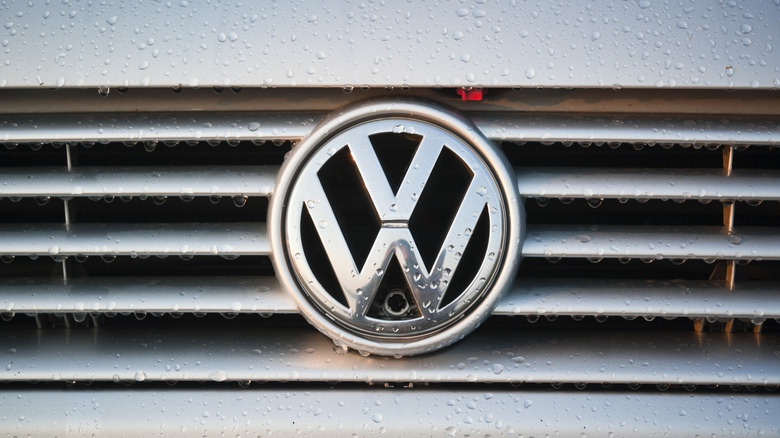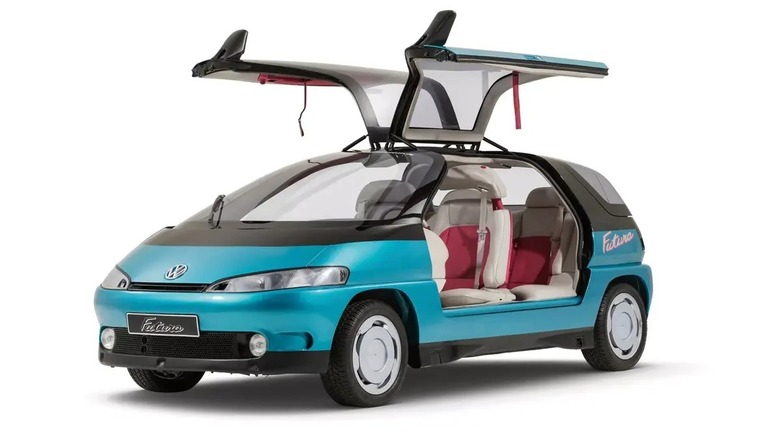Volkswagen's Butterfly Door Concept Car: A Glimpse Into The Future That Never Was
Concept cars are one-off prototypes typically built to showcase an automaker's innovative thinking or demonstrate some tantalizing new technology that either ends up flopping or goes on to revolutionize the car industry. They are test beds that usually never make it to full production but give us a peek — and sometimes a new perspective — at what a vehicle can be now and in the future.
From sports car makers like Lamborghini to luxurious Mercedes, economical Hondas, and even a lawnmower company, every automobile manufacturer builds them. Quite often, they are big draws at auto shows because of their brash boldness and of great interest to car enthusiasts and collectors due to their rarity. Volkswagen is no different.
In 1989, the German car company revealed the teal-blue Futura minivan at the Frankfurt Motor Show as one such car of the "future" ... if by the future they meant from the year 2000. It was an Integrated Research Volkswagen (IRVW) equipped with technological features that, for the most part, the general car-buying public at the time was wholly unaware even existed.
Minivan, you say? Let's set the scene. As a thing, as an actual vehicle style, the minivan was still relatively new. When Chrysler rolled out the Dodge Caravan and the Plymouth Voyager in late 1983, they took the country by storm. Every family almost immediately wanted a minivan. The Futura looked nothing like the Caravan or the Voyager, though — it looked like a bullet shot from a gun.
Spread your wings and fly to the future
The Futura had rounded edges, and the nose sloped up to meet the steep angle of the front windshield. It then swept back and integrated with the two mostly glass gullwing side doors that didn't slide open or out like a conventional minivan but upwards like some wildly exotic four-seat sports car. The glass continued over the roof to a domed rear window (which could be removed) and created what felt like a wrap-around fighter jet cockpit.
The movie "Top Gun" dropped in May 1986 and was already pop-culturally iconic when the Futura hit. It would not be surprising if Volkswagen intentionally created a danger zone that would evoke that same lovin' feeling in consumers.
But the Futura didn't just look dangerous; it was equipped with a bevy of high-tech features that a modern jet fighter would be jealous of. It had an on-board computer that ran the self-steering park assist system, electric parking brake, navigation system, and distance sensors. All of these are now standard in almost every car on the road.
The 1.7-liter diesel engine only kicked out 82 horsepower (so not as fast as a jet), but it was adequate for the 2,200-pound car. It also had a mechanical supercharger and a clever evaporative cooling system that eliminated the need for a cooling pump and fan. Additionally, several speakers were connected to a noise-canceling sound system that muffled engine noise.
The Futura was never produced, but when Volkswagen's ID.3 appeared at the 2019 Frankfurt Motor Show, some of its designs were, shall we say, obvious.

